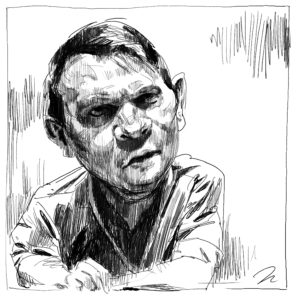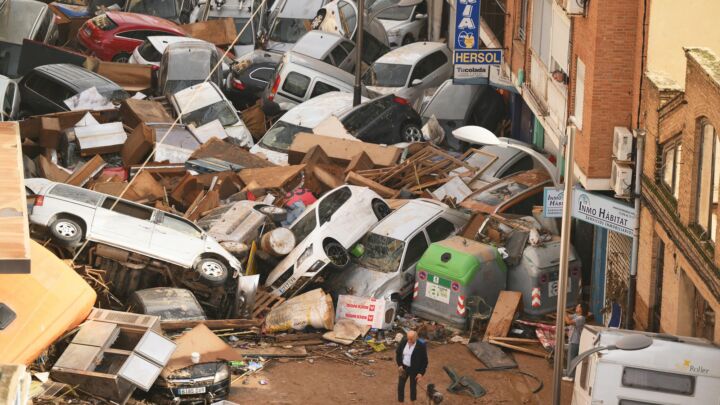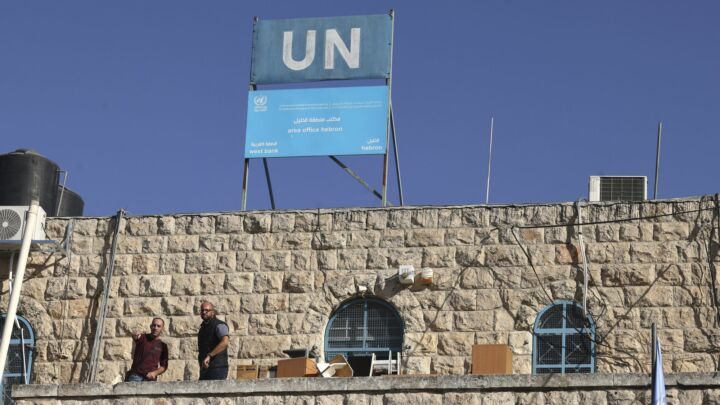There is no such thing as a ‘good lie’
Hoax horror stories do no favours for Palestinians, instead turning them into objects of Western pity.

Want to read spiked ad-free? Become a spiked supporter.
The claim of Israeli Army spokeswoman Avital Leibovitch that the blogosphere is ‘a whole new battlefield’ gained troubling credence this week, with the release and circulation of a video clip showing the horrific aftermath of an Israeli air attack on a Gazan market.
It makes for truly shocking viewing. As the smoke clears, the mangled, dismembered bodies of Palestinians come into view. The accompanying din of confusion and distress is almost unbearable. For many anti-war campaigners, if anti-Israeli sentiment was virulent before seeing the footage, it was a foaming wash of hatred afterwards. ‘The carnage is raw’, wrote one blogger, ‘it enrages me. I wish for Israel nothing but destruction.’ (1) Another blogger was near speechless: ‘There are no words to describe the terror of the Jewish state of Israhell.’ (2) Such was the stir created by the bloody footage that the French national broadcaster, France 2, decided to broadcast it.
And well they might. For here was a video clip which showed the barbarity of Israel at first hand, a piece of footage that said more about the one-sided nature of the war in Gaza than a thousand news reporters’ words ever could. But there was one problem with it: the clip was not what it puported to be. Yes, those really are Palestinians lying dead or maimed on the floor, but the footage is not from the current war in Gaza; it is from September 2005. And it does not show the aftermath of an Israeli air attack – it is the gruesome epilogue to the accidental explosion of a truck loaded with rockets at a Hamas rally.
The fall from the moral high ground has been excruciating. Bloggers have had to issue apologies and mea culpas. And most humiliating of all, France 2, France’s most prestigious news channel, was forced to explain how it fell prey to such a piece of propaganda: ‘It is an error on our behalf. There was an internal malfunction in the checking of information.’ (3)
And yet, there has been something reluctant about the apologies, a disingenousness writ large in the neutral, circumlocutory tone taken by France 2. While this particular video may be a hoax, some imply, there is the belief that it still captures the essence of Israel’s brutal assault on Gaza. This is a dangerous sentiment. It elevates journalistic, indeed, subjective perception of events over their objective reality. It’s as if distant observers see the truth that the actual events themselves withhold. The meaning projected on to the conflict – whether it’s the duplicity of Hamas, or in this case the genocidal brutality of Israel – becomes more important than the truth of the conflict itself.
But if we are serious about not letting truth become the first casualty of war, then a fake can never be a fact, regardless of the extent to which it matches one’s interpretation of a conflict. There are no ‘good lies’ in war – only lies.
This is no occasion for a right-wing celebration of the anti-Israel lobby’s moral turpitude, either. The success of the misleading horror video may reveal something about Hamas’ mendacity or the credulity of some of its supporters – but it also reveals a great deal about mainstream media thirst for a simplistic, blood-spattered, good-versus-evil narrative for this war.
In much of the media, thorough analysis and nuanced interpretation, not to mention journalistic objectivity, has given way to horror and gore. Our response to the war in Gaza has become visceral, emotional – and subjective. With the collapse of a critical distance, immediate, emotional identification is encouraged in its place. ‘We have more harrowing material from inside one of the main Gaza hospitals’, said Channel 4 News’ Alex Thomson last week: ‘I guess I need say no more.’ That sums up a broader problem in the coverage of this conflict: journalists think they need ‘say no more’ than simply show bloody footage. Who needs words, analysis, thought when you have, as the Guardian did on its front page this week, a photo of three dead Palestinian children?
It is in this climate of searching for horror rather than truth that something like the misleading Palestinian video can spread wildly, and end up even in respectable TV news reports. By approaching the war as a spectacle for the emotional delectation of a Western audience, the media reduce Palestinians themselves to little more than objects of pity. This does not help the Palestinians’ struggle; it deprives it of meaning, except that which its international audience grants.
In the same week that the media, new and old, let their hearts rule their heads by treating fiction as fact, the Israeli air force bombed two schools in the same area where that accidental explosion occurred in 2005. Over 40 people were killed. This, perhaps, is the grisliest irony of all. In the desperation to lie our way to the truth via some dodgy video footage, the brutal veracity of fact can be undermined, sidelined. Anyone who genuinely empathises with the plight of the Palestinian people, who supports their right to self-determination, should surely want the real truth and meaning of the conflict revealed. But this truth will out only if over-eager distortion does not stand in the way.
Tim Black is senior writer at spiked.
Gaza is not Warsaw, by Nathalie Rothschild
Who made Gaza into a bloody trap?, Brendan O’Neill
Whose war is it anyway?, Brendan O’Neill
War without ends?, by Mick Hume
The first Twitterwar, by Nathalie Rothschild
‘We’re all Gazans now’, by Tim Black
The antithesis of anti-imperialism, Brendan O’Neill
Read more at spiked issue: War in Gaza
(1) Israel bombs a civilian market in Gaza, The Truth Will Set You Free, 3 January 2009
(2) What Israel don’t want you to see, Sabbah Blog, 4 January 2009
(3) The hysteria that dare not speak its name, Spectator, 7 January 2009
Celebrate 25 years of spiked!
A media ecosystem dominated by a handful of billionaire owners, bad actors spreading disinformation online and the rich and powerful trying to stop us publishing stories. But we have you on our side. help to fund our journalism and those who choose All-access digital enjoy exclusive extras:
- Unlimited articles in our app and ad-free reading on all devices
- Exclusive newsletter and far fewer asks for support
- Full access to the Guardian Feast app
If you can, please support us on a monthly basis and make a big impact in support of open, independent journalism. Thank you.







Comments
Want to join the conversation?
Only spiked supporters and patrons, who donate regularly to us, can comment on our articles.